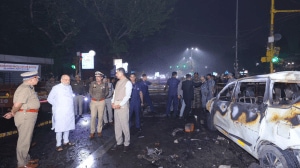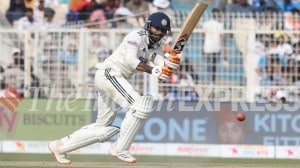The problem with reforms…
Over the last few weeks, votaries of economic liberalisation (including this newspaper) have been wringing their hands at the inability of t...

Over the last few weeks, votaries of economic liberalisation (including this newspaper) have been wringing their hands at the inability of the UPA government to make headway on economic reforms. In newspaper columns, on TV, in the drawing rooms and board rooms of the educated classes, Left parties have unequivocally emerged as the villain of the piece. They are variously portrayed as ideological dinosaurs, partisans of the narrow interests of unionised labour “elites”, or schemers relentlessly blocking the UPA’s economic agenda at the Centre even as they pursue pragmatic policies in West Bengal. All these criticisms may well be valid but they miss the point.
The Left is doing what political parties should do in a representative democracy. It has clearly articulated what it stands for, won a mandate on that basis, and is using it as shrewdly and as forcefully as it can to advance its cause. The Left did not win 60 seats in the ’04 Lok Sabha election by promising to support liberal economic policies. Indeed, who can forget how the likes of Sitaram Yechury and A.B. Bardhan spooked the stock market shortly after the UPA government assumed office by publicly speaking out against virtually every item on the menu of India’s economic liberalisers — from disinvestment to FDI to pension and labour law reforms. Since then the Left has simply followed through on its stated positions.
Rather than the Left, the real problem with our reforms is with our Right.
Ever since Narasimha Rao cannily exploited the ’91 crisis to push through an unprecedented package of economic reforms, India’s economy has been opened up on the basis of an elite consensus (cutting across major political parties) rather than broad-based popular support.
Liberalisation’s midwives have been technocratic-politicians such as Manmohan Singh, Chidambaram and Jaswant Singh. Admittedly, both the Congress and BJP’s last three election manifestos contain timid endorsements of reforms, but their language is muddled and shot through with socialist, populist shibboleths. No red-blooded leader with a mass base — whether a Pawar or a Laloo — has felt it worthwhile to take a clear-cut stand in favour of opening up the economy.
The Left’s successful blocking of reforms in the name of “the people” over the last 14 months has exposed the limitations of pushing liberalisation via a top-down, technocratic end run around the political process. It is now clear that unless liberal economic policies are subjected to the cut and thrust of democratic politics, and a genuine effort made to build a popular mandate for opening up the economy, India’s reform process will stall.
This should have been the agenda for the Right. Unfortunately, that position in Indian politics is occupied by those keener on religious and nationalistic chauvinism than on economic liberalisation. It was not always thus. As Jerry Rao has reminded us in these columns, India in the ’60s saw the brief flowering of a political movement that genuinely stood for economic liberalism — and was successful at the hustings. Formed in reaction to the hard socialist turn taken by the Congress in the second half of the ’50s, the Swatantra openly stood for anti-statism, encouragement of individual initiative, and an economy freed of the “dead hand of the state”.
Swatantra’s leadership managed to secure popular support for their liberal world view. In the ’62 general election, Swatantra won 8 per cent of the Lok Sabha vote (almost as much as the Communists) and emerged as Congress’s leading opposition in the Orissa, Rajasthan, Gujarat and Bihar assemblies. In the ’67 elections, Mrs Gandhi’s first, Swatantra doubled its Lok Sabha contingent and had more MPs than Congress from Gujarat, Madras, and Orissa. In Orissa, Swatantra formed a coalition government. Unfortunately, that was Indian liberalism’s high point. Swatantra was very early on smeared by Nehru as a party of the wealthy, belonging to the “middle ages of lords, castles and zamindars”, likely to become “fascist in outlook” — and the smear stuck.
Between 1969 and 1971, Mrs Gandhi cornered Swatantra with her dramatic lurch to the left and masterly mobilisation of popular sentiment around the slogan of ‘‘Garibi Hatao’’. In the 1971 parliamentary elections, Swatantra was humbled, winning just 8 seats and 3 per cent of the popular vote, and gradually faded into irrelevance.
Thanks to Mrs Gandhi, the Left came to occupy the moral high ground of Indian economic policy. They were the good guys who were “for” the poor. Politicians of all hues now had to pay obeisance to the language of socialism, statism, autarkism. To do otherwise, was to be “against” the poor — and no sensible politician could afford to be accused of that! Economic liberalism therefore became the poisoned chalice of Indian politics.
So despite liberal principles shaping the thrust of economic policy since ’91, our reformers “dare not speak its name” resulting in a muddled public discourse that plays into the hands of the Left. Witness the confusion surrounding PSU privatisation, the case for which is made not on clear thinking around the state’s rightful role in the economy, but on the rather more flimsy logic of getting rid of loss-making enterprises or raising government revenues for social investment. Or around FDI, which is piously justified in terms of getting foreigners to plug financing gaps, not in terms of its contribution to overall competitiveness and growth.
Breaking the Left-imposed kabosh on our reforms will require the spirit and language of Swatantra to be rekindled — but cast in a popular idiom. Liberal economics must shed the taint of being the “dogma of the rich” that the Left has attached to it and liberalisation shown to be in the best interests of the broader populace. This means that our champions of reform have to leave their elite, English-speaking circles and plunge into the rough and tumble arenas of vernacular India to openly challenge the Left’s monopoly on speaking for “the people”. For instance, why can’t the case for relaxing restrictive labour laws be made in terms of creating opportunities for the millions of young people coming into the workforce every year all across the country? Or why not present PSU privatisation as eliminating the squandering of government funds, a material fraction of which comes directly or indirectly from taxes borne by lower income groups?
There are three reasons to be cautiously optimistic that the language of economic liberalism will strike a responsive chord amongst the people. First, anti-statism is arguably closer to the ethos of much of India’s population and, right from the days of the Indian National Congress, has appealed to a core electoral base. Second, the fruits of reform are now enjoyed by a broad swathe of our society, not just the middle classes. Finally, the exposure provided by satellite television, combined with the increasing reality of upward mobility in our society, is giving even those who are not yet beneficiaries of liberalisation a stake in its success.
The minute political leaders with a mass base smell that liberal economic policies may be electorally palatable, at least some of them will be emboldened to emerge from the shadow of the Left and openly declare in favour of reform. However, reclaiming economic liberalism’s legitimacy in the mainstream of Indian politics will take more. It will require that the liberalisation agenda be embedded in a broader coalition of values at the centre of Indian politics where much of the electorate resides. One of the Left’s great sources of strength is that it stands for many things —secularism, civil conduct and discourse, and probity in public life at least relative to other political parties — that appeal to a wide citizenry even if they are disenchanted with its economic policies. But there is absolutely no reason that these values are inconsistent with support for economic reform — indeed, they are core liberal values!
The genius of India’s freedom struggle under Gandhi was the manner in which it yoked the educated, nationalist upper classes to a mass political movement, and created a popular, vernacular idiom to convey the abstract virtues of self-rule and democracy to ordinary people. India’s drive for economic freedom urgently needs a similar thrust. A “new” Right, centered around the hoary traditions of popular liberalism rather than the divisive politics of creed and petty nationalism, can mobilise the broad popular constituency that is crucial for reform to regain its momentum.
The author is a Mumbai-based senior management consultant. The views expressed here are his own
- 01
- 02
- 03
- 04
- 05































